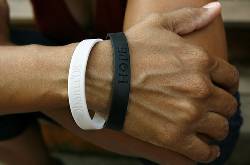When the 2020 census results were released, they showed a boom in the number of people classified as multiracial in the United States since 2010. Two Princeton sociologists now say that jump was mostly an illusion.
The 276% increase largely happened because of a change in how people were classified by the U.S. Census Bureau rather than strong shifts in racial or ethnic identity or major growth, according to a paper published last month by Paul Starr and Christina Pao. The Census Bureau for the first time provided space on the census form for people to write-in their families' origins, which guided how the statistical agency categorized them.
People who were classified as being two or more races rose from 2.9% to 10.2% of the U.S. population from 2010 to 2020, and the increase was most noticeable among Hispanic people. The share of the white alone population dropped from 72.4% to 61.6%, provoking handwringing among some conservative commentators about what they called a loss of white power.
The Princeton researchers argued that anyone who marked themselves as Black or as white on the 2020 census form but then wrote that they were of Latin American origin was reclassified by a computerized algorithm as multiracial even though they had marked themselves as a single race. The same multiracial reclassification appeared to have been made for people who self-identified as white only but then wrote that their origins were from an African country, according to the researchers.
“So the 2020 census produced a sudden jump in the multiracial count and a precipitous decline in the count of the white population, contributing to an unwarranted panic among white conservatives about demographic change,” Starr said in an email. “The procedure was misleading, and the public was misled about the extent of racial change.”
When the figures were released in mid-2021, Census Bureau officials said the new method was an improvement that did a better job of capturing the complexities of how people identify their race and ethnicity in the 21st century. At the same time, they acknowledged that some of the dramatic growth likely came from their changes.
For the first time, empty spaces were left on the 2020 census form so that respondents could write in their “origins,” such as “German” or “Jamaican,” when answering the race question. The detailed answers guided the Census Bureau in classifying the respondents and members of their households into race and ethnicity categories.
“These improvements reveal that the U.S. population is much more multiracial and diverse than what we measured in the past,” Census Bureau officials said at the time.
The official numbers on multiracial people are important because they are used for redrawing political districts, civil rights enforcement, labor data, health statistics and distributing federal funding. As the daughter of a Jamaican father and an Indian mother, Vice President Kamala Harris’ run for the White House as the 2024 Democratic presidential nominee put multiracial identity in the spotlight.
The Princeton researchers said the Census Bureau mistakenly mixed up ancestry with identity and national origin with race, and they believe the agency should abandon using “origins” to categorize people.
The issue flew under the radar because of other distractions surrounding the 2020 census, such as the Trump administration's unsuccessful attempt to add a citizenship question, a controversial new data-privacy method and the COVID-19 pandemic, which threw the nation's head count off schedule. Black, Hispanic and American Indian residents on reservations were undercounted in the 2020 census.
Researchers have been asking the Census Bureau since 2021 to rerun the 2020 data using 2010 methods so that an “apples to apples” comparison of demographic changes can be made, but the agency hasn't done it yet, said historian Margo Anderson, who served on a National Academies panel that reviewed the quality of the census.
“It’s 2025 and people have been asking since 2021, ‘What the hell did you do?’” Anderson said. “There is a lot of frustration there because we can't know.”
The Census Bureau has historically struggled to classify multiracial people, said Susan Graham, an advocate for multiracial representation in official statistics. Respondents weren’t allowed to check more than one race until the 2000 census
“Was the 2020 Census subjected to a fictitious multiracial boom? Possibly,” Graham said. “As always, answers only get more confusing when the federal government goes back and tries, one more time, to get it right.”
Race and ethnic categories used by the federal government are changing further to combine questions about race and ethnicity instead of asking about them separately. A Middle Eastern and North African category also is being added which will reduce the number of respondents identifying as white.
Not all demographers think the Census Bureau's methodological change was that profound.
“I don't think it's that big of a deal for most people using the data,” said William Frey, a demographer at The Brookings Institution. “I think that the Census Bureau is trying hard to get this right."
___
Follow Mike Schneider on the social platform X: @MikeSchneiderAP.
...


 Copyright © 1996 - 2025 CoreComm Internet Services, Inc. All Rights Reserved. | View our
Copyright © 1996 - 2025 CoreComm Internet Services, Inc. All Rights Reserved. | View our